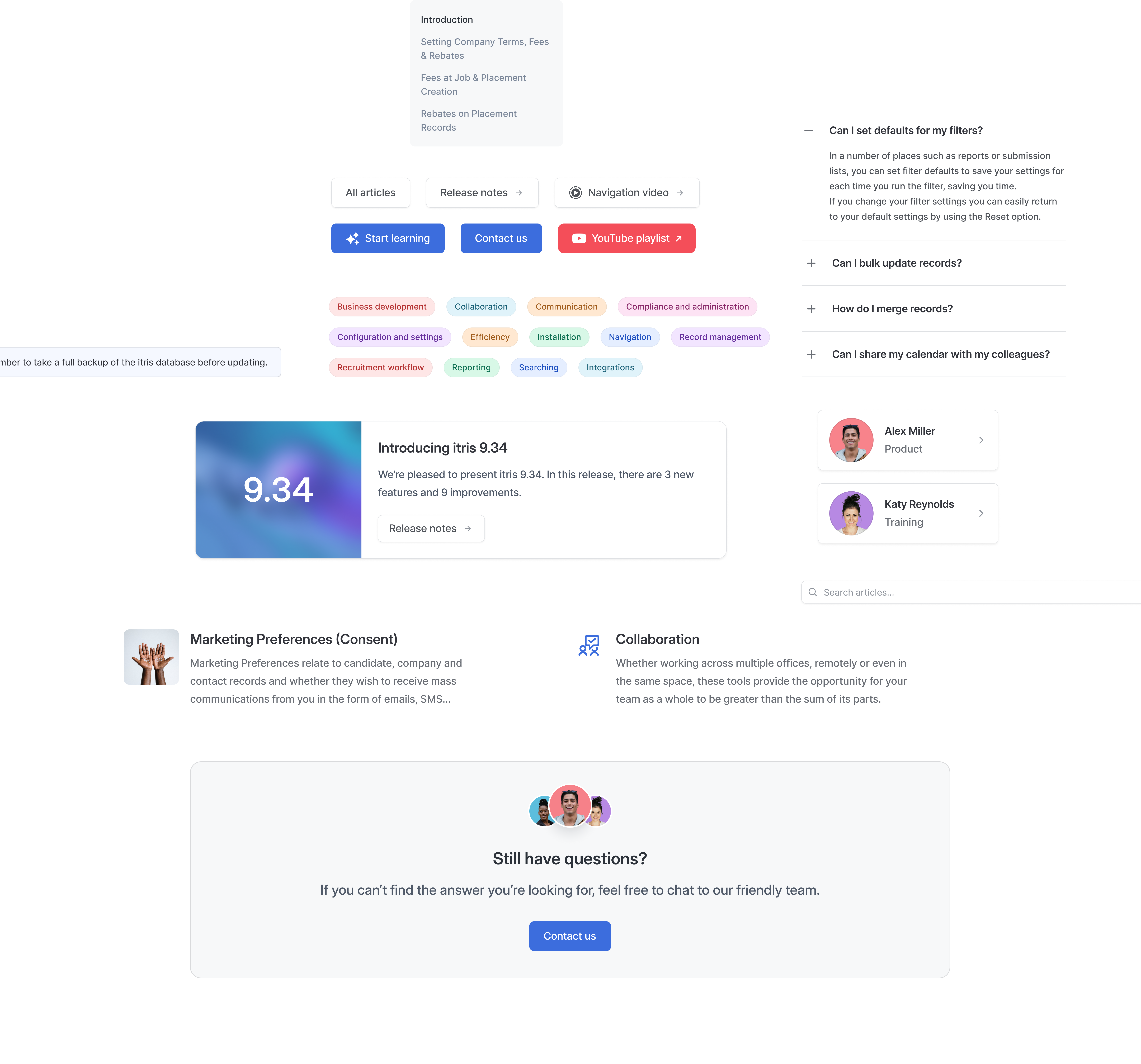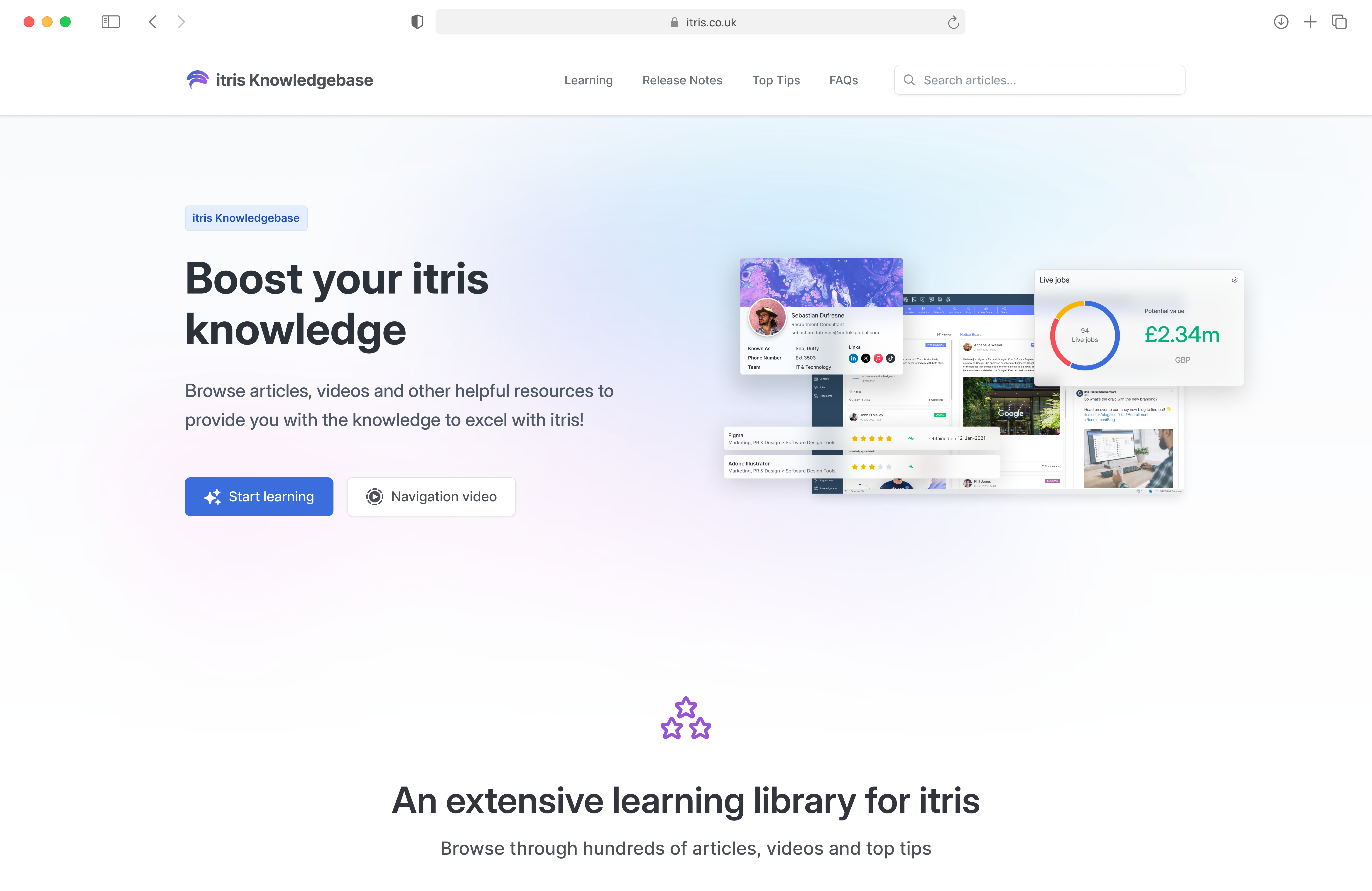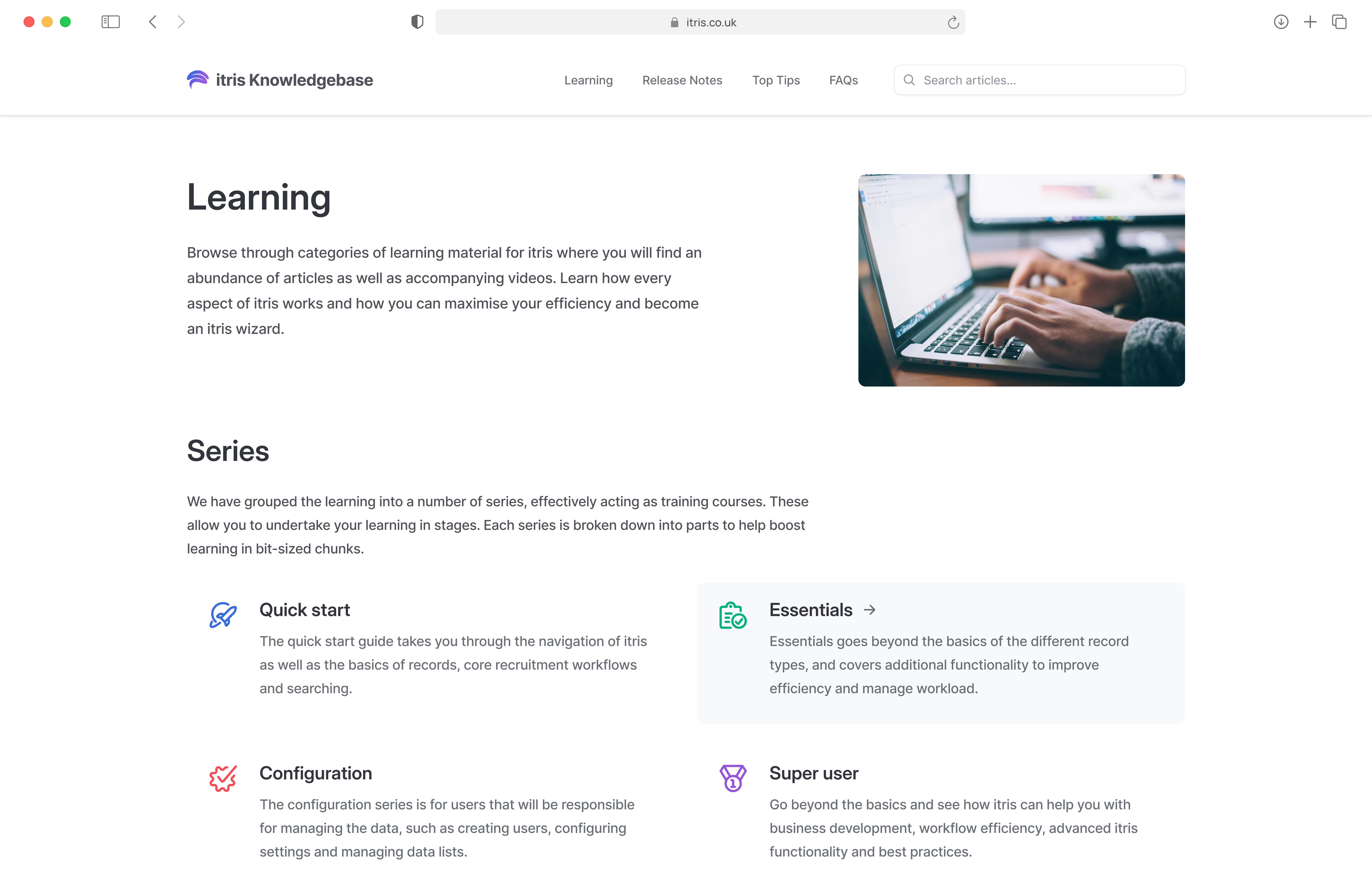Context
High quality documentation is an important cornerstone of any software product, particularly if the product contains some complex workflows. Having easily accessible, well maintained and structured documentation provides some key benefits to a business, including:
- Quicker onboarding for new users
- Easier learning curve
- Increased trust in the company
- Competitive advantage
Ultimately, if users feel confident that they can use a product, they are more likely to be advocates and it dramatically reduces support and training calls. That was the main objective we had when creating the itris Knowledgebase.
I led the design and collaborated with key stakeholders from across the business to produce a high-quality learning resource for the company and the users of the product.

Problem
At the time, documentation existed as PDFs on a shared drive. Users did have access to these documents, but you had to know where to look to find them. As a result, documents were often duplicated and changed to align more closely with the department consuming them, which led to scattered documentation that was quickly out of date.
This gave rise to an increasing amount of inconsistency for users, as there was not an easily accessible, central source of truth for learning materials. Additionally, the training team was offering training courses, but these were big commitments from customers and proved to be inefficient for an industry that typically has a higher than average staff turnover.
This was something that needed to be addressed as it was becoming an issue for the business and leading to users not getting the level of service they expected. It was also not meeting the standards of quality set by the business.
Goals
User
- Easily accessible, high-quality learning materials for self-education
- Sign-posting in the product for features with more advanced concepts
- A collection of written and video materials so that users can learn at their own pace in their preferred method
Business
- Remove friction with self-educating for users
- Increase user trust in the product and the company
- Single source of truth repository for documentation
- Lighten the burden on customer success and training teams
- Promote learning opportunities in the product
Research
I looked into options of using an off-the-shelf solution to documentation and researched products like GitBook and Notion, but they lacked the customisation that we needed. Internally, we used Confluence, so I also looked into whether we could expose those articles publicly, but this came with too many trade-offs and again, a lack of customisation.
Opportunity
Since none of the off-the-shelf solutions were viable, I explored the idea of creating our own purpose-built site that catered for the different learning journeys for a user. Also, somewhere users could also find top tips, FAQs, and product release notes.
Challenges
- All the learning materials were currently in PDFs and our internal docs platform, so these would need to be ported over to the site (which was in Markdown format)
- A new iteration of our visual language was in progress, but it was immature so implementing this would add to the scope as new components would need to be created specifically for the Knowledgebase
- The training team would need to learn and become familiar with VS Code, writing articles in Markdown and have a good understanding of git

Solution
I spent some time exploring different designs until, together with key stakeholders, we settled on a final version. Throughout the design explorations, it was important to ensure that the design felt right and was aligned with the brand.
For inspiration, I looked at some best-in-class documentation and found myself drawn to Stripe Guides in particular. I also looked at Apple's support docs as well as Atlassian's documentation.
The final product contained a landing page, articles accessible through a series route (mirroring training courses) or categories route, search capabilities, release notes, top tips and FAQs.



Results
The Knowledgebase was a success and received positive feedback from users, internal teams, and even a competitor. Since its release in 2022, there are 200+ articles on the site, as well as 50+ top tips and 60+ FAQs.
Traffic to the Knowledgebase averages at around 1,600 visits per month, and the number of training and support enquiries has dropped significantly.
As a result of the Knowledgebase, the demands on our services changed and the volume of inbound calls and emails reduced considerably. We were also able to reduce the training department's headcount from 5 members of staff down to 1, whilst still maintaining strong customer feedback. Ian Farrow, Product Director